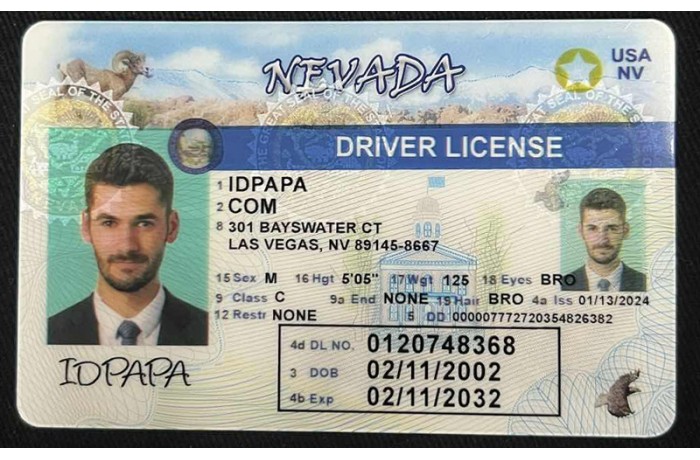The Evolving Landscape of Digital Identity: Trends Shaping the Future
The Evolving Landscape of Digital Identity: Trends Shaping the Future
Blog Article
The digital realm is experiencing a rapid shift in how we authenticate ourselves online. Emerging technologies are altering the concept of digital identity, creating both possibilities and fostering a more robust online experience. , Decentralized ledgers are gaining traction in this space, providing users with enhanced ownership over their data and {identities|. This trend is likely to impact various sectors, including finance, healthcare, and government.
- Several key trends are this transformation:
- Biometric authentication
- Deep learning
- The rise ofvirtual worlds
Understanding these developments is crucial for {individuals|, businesses, and governments to ensure a safe, trustworthy digital future.
Mitigating ID Fraud: Strategies for a Secure Digital World
In today's increasingly digital landscape, identity theft poses a significant threat to individuals and organizations alike. To effectively combat this growing menace, it is crucial that we implement robust security measures and foster a culture of awareness.
Utilizing multi-factor authentication, regularly updating software and devices, and adhering strong password hygiene are primary steps in safeguarding against ID fraudulence. Furthermore, educating users about the threats of phishing scams and other social engineering tactics is crucial.
Partnership between governments, businesses, and individuals is critical to creating a secure digital environment. By working together, we can minimize the impact of ID fraud and preserve our valuable information in an increasingly interconnected world.
Venturing into the Legal Labyrinth: copyright Laws and Their Implications
The realm of fake identification poses a complex legal panorama. Laws dictating these documents fluctuate widely across jurisdictions, creating a intricate web for both persons and law enforcement.{ Possession of a copyright can convey in severe ramifications, including fines, imprisonment, and past offenses. Moreover, the obtainment of these fraudulent documents can sometimes be connected to more serious wrongdoings, further emphasizing the importance of adherence with these laws.
Harnessing Biometrics for Unrivaled Security in Digital IDs
The digital realm is rapidly evolving, necessitating robust security measures to safeguard sensitive information. Person-Specific Identifiers, the science of measuring and analyzing inherent human characteristics, presents a compelling solution for enhanced security within digital ID systems. Harnessing biometrics like fingerprint scanning, facial recognition, or iris authentication, digital identities can be authenticated with unprecedented accuracy and resilience against fraud. This technology not only expedites identity verification processes but also establishes a secure framework for managing essential personal data in an increasingly interconnected world.
Furthermore, biometrics offeradvantages over traditional authentication methods|. They are inherently difficult to forge or replicate, reducing the risk of unauthorized access and identity theft. Moreover, biometrics simplify user interaction, as users can conveniently verify their identities without using multiple authentication factors.
- Despite these benefits| , it is crucial to address potential concerns surrounding biometrics, including data privacy and the possibility of breaches. Robust regulatory frameworks and ethical guidelines are essential to ensure responsible implementation and mitigate any negative consequences.
Balancing Convenience and Privacy: The Ethical Considerations of Biometric Authentication
Biometric authentication offers a frictionless way to verify users. However, the growing implementation of this technology raises significant ethical questions. Maintaining biometric data poses a unique set of threats to user privacy, as this information is uniquely personal and unalterable. Moreover, the potential for exploitation of biometric data by third parties demands careful consideration concern.
A delicate balance must be struck between the utilities of convenience and the urgency to protect user privacy. Robust safeguards, such as secure storage, clear consent mechanisms, Ethical ID manufacturing and strict regulations are necessary to mitigate these risks and ensure the ethical utilization of biometric authentication.
Ultimately, the goal should be to harness the potential of this technology while upholding the fundamental right to privacy.
Strengthening Trust: Best Practices for Implementing Secure Digital Identity Solutions
In today's increasingly digital world, reliable digital identity solutions are paramount to fostering trust and safeguarding sensitive information. To effectively implement these systems, organizations must adhere to best practices that prioritize anonymity, visibility, and flexibility. A key component involves implementing multi-factor authentication procedures to verify user identity. Additionally, regular audits and penetration testing are crucial for identifying and mitigating potential threats. By adhering to these best practices, organizations can create a secure and trustworthy environment for users while reducing the risk of fraud and data breaches.
 Report this page
Report this page